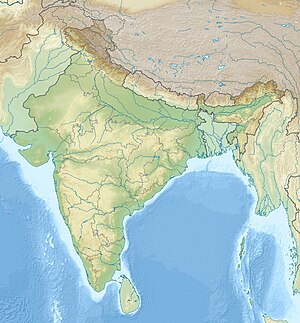Mahendragiri, Odisha
| Mahendragiri | |
|---|---|
| Highest point | |
| Elevation | 1,501 m (4,925 ft) |
| Coordinates | 18°58′28″N 84°22′05″E / 18.97444°N 84.36806°ECoordinates: 18°58′28″N 84°22′05″E / 18.97444°N 84.36806°E |
| Geography | |
| Location | Paralakhemundi, Orissa, India |
| Parent range | Eastern Ghats |
| Climbing | |
| Easiest route | Hike/scramble |
Mahendragiri, is a mountain peak at in the Paralakhemundi (or Parlakimidi) subdivision of the district of Gajapati, Orissa, India. It is situated amongst the Eastern Ghats at an elevation of 1,501 metres (4,925 ft).
The Mahendra mountain is associated with east direction which clearly says that it is non other than Eastern Ghats. It is associated with mythological stories from the Ramayana as Mahendra Parvata (mountain). It is a 'Kula Parvata' along with Malaya, Sahyadri, Parijatra, Shuktiman, Vindhya and Malyavaan. In the Puranas and Mahabharata [we read] that Parashurama practiced penance for a long time on the Mahendra mountain.
The epic mountain Mahendragiri is situated in Gajapati district, Orissa.Legend says that it is the place where Lord Parashurama, a chiranjeevi staying eternally and doing tapasya. Temples built by Pandavas are seen. The main festival observed here is Shivaratri.
This is the second highest mountain peak of Odisha after Deomali in Koraput district. It has interesting archaeological remains.
Mahendragiri hill and its surrounding areas are recognized as a biodiversity hot spot due to numerous medicinal plants and other species that are found here. A haven for medicinal plants, Mahendragiri Hills, which is part of the Eastern Ghats, is home to over 600 flowering plants. The faunal diversity of the region is huge and particularly known for being a herpetofaunal hotspot. The Ministry of Environment and Forests, GoI had proposed the State Government of Odhisa in 1986 to declare the Mahendragiri hill as a Biodiversity Hotspot area. An expert committee of the Forest and Environment Department has also recommended that the bio-diversity hotspot Mahendragiri Hills should be declared as a Biosphere Reserve in 2014.
...
Wikipedia


